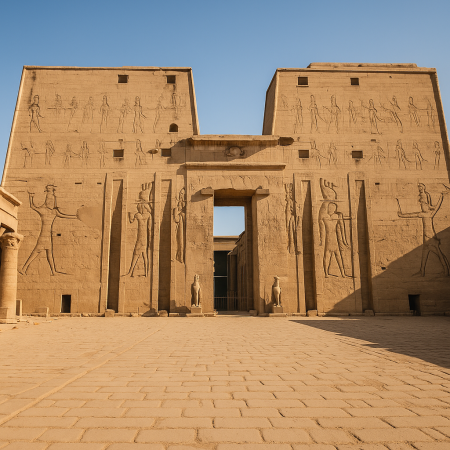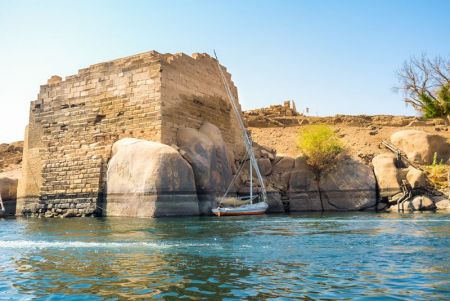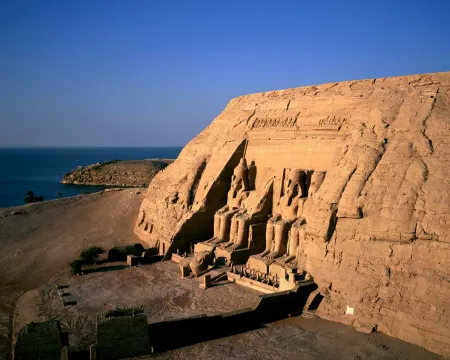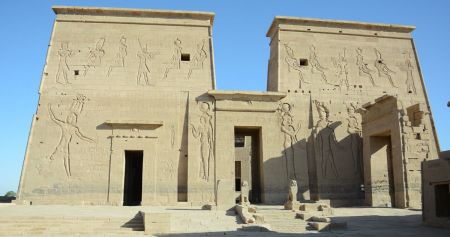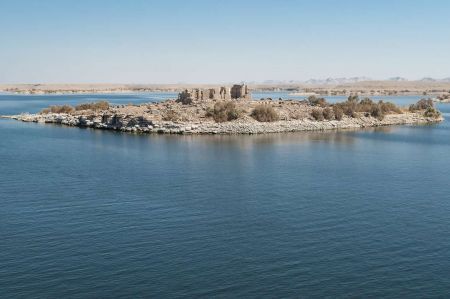The Unfinished Obelisk

In the sun-drenched granite quarries of Aswan lies one of ancient Egypt’s most mysterious and telling monuments — the Unfinished Obelisk. Carved directly from bedrock but never fully extracted, this massive structure offers rare insights into ancient Egyptian engineering and stonecutting techniques. Estimated to weigh nearly 1,200 tons and measure over 42 meters in length, the Unfinished Obelisk was poised to be the largest obelisk ever erected had it been completed. However, a significant crack halted its construction, freezing it in time for modern visitors to study and admire. Today, this remarkable relic sits within the Northern Quarry, where tourists can walk alongside it and envision the sheer scale of ambition and mastery that defined Pharaonic Egypt.
The Origin and Purpose of the Unfinished Obelisk
Commissioned by Queen Hatshepsut
Historical evidence suggests that the Unfinished Obelisk was commissioned during the reign of Queen Hatshepsut, one of Egypt’s most powerful female pharaohs. Known for her monumental building projects, Hatshepsut likely intended this obelisk to complement her temple at Karnak or possibly to stand proudly in front of another grand structure. Obelisks were symbols of divine connection and royal authority — towering shafts of granite pointing to the heavens, dedicated to the sun god Ra.
Why It Was Never Completed
As workers carved deeper into the granite bedrock, they discovered a crack running through the shaft, rendering the structure structurally unsound. With no way to salvage the piece or move such an immense weight safely, the project was abandoned. This abrupt cessation left behind a perfectly preserved snapshot of the ancient stoneworking process — from initial outlines to chisel marks still visible on the surface.
Engineering Mastery in the Granite Quarry
Stonecutting Tools and Techniques
The tools used to craft the Unfinished Obelisk were surprisingly simple: dolerite balls (a harder stone) used to pound and wear down the granite surface. Workers would outline the desired shape and then carve trenches around the base to separate it from the bedrock. The precision required to cut such an enormous monolith with hand tools demonstrates the incredible skill of ancient artisans.
Transport Challenges
Even more astonishing than the carving is the mystery of how ancient Egyptians moved finished obelisks. Theories suggest that they dragged the massive stones on wooden sledges lubricated with water to reduce friction, then floated them down the Nile to their final destination. The logistics of transporting an obelisk weighing over 1,000 tons remains a subject of fascination among archaeologists and engineers alike.
The Unfinished Obelisk as an Open-Air Museum
A Time Capsule of Ancient Industry
The Unfinished Obelisk is more than just a stone monument; it’s a tangible chapter in Egypt’s industrial and religious history. Visitors can trace the outline, observe unfinished trenches, and analyze tool marks — all of which paint a vivid picture of ancient labor and technique. It's one of the few places where visitors can witness an obelisk in mid-creation, offering unparalleled educational value.
The Surrounding Granite Quarry
The quarry itself is an archaeological site filled with partially carved stonework, abandoned tools, and unfinished sculptures, suggesting it was once a bustling industrial hub. This context transforms the obelisk from a single artifact into part of a larger narrative about how temples, statues, and monuments were born from stone.
Discover the magic of Egypt in complete comfort with our premium Luxury Nile Cruises
Importance in Egyptology and Tourism
Contribution to Understanding Obelisk Construction
Because no other obelisk was left in such an early stage of construction, the Unfinished Obelisk is an invaluable resource for historians and Egyptologists. It’s often referenced in studies on ancient engineering and remains one of the most visited archaeological sites in Aswan.
A Highlight of Any Aswan Itinerary
Tourists flock to the site not only for its historical value but also for its sheer scale. Standing beside the Unfinished Obelisk offers a humbling perspective on the ambitions of a civilization that sought to reach the gods. It complements visits to Philae Temple, the High Dam, and the Nubian Museum, making it a must-see in southern Egypt.
Visitor Information
How to Get There
The Unfinished Obelisk is located in Aswan’s Northern Quarry, easily accessible by taxi or guided tour. It’s a short drive from the city center and often included in day tours that explore the High Dam and Philae Temple.
Best Time to Visit
Winter months (October through April) offer the most pleasant weather for exploring the site. Early morning or late afternoon visits provide the best lighting for photography and allow visitors to avoid the midday sun.
Symbolism and Legacy
The Obelisk in Ancient Religion
Obelisks were sacred symbols representing sunbeams and divine enlightenment. They were typically placed in pairs at temple entrances to honor the gods and commemorate royal achievements. The Unfinished Obelisk, though never raised, still embodies the same spiritual and political aspirations.
A Monument of Human Endeavor
Despite its incomplete state, the Unfinished Obelisk remains a powerful symbol of human ambition, craftsmanship, and the challenges faced by even the most advanced ancient civilizations. It’s a testament to the Egyptians’ pursuit of greatness, even in failure.
FAQs about the Unfinished Obelisk
Why is the Unfinished Obelisk important?
The Unfinished Obelisk offers rare insight into ancient Egyptian stoneworking and is the largest known ancient obelisk. It’s a critical archaeological source for understanding how obelisks were carved and intended to be transported.
Can visitors walk around the Unfinished Obelisk?
Yes, the site is open to the public. Visitors can walk around the obelisk and view it up close, observing the details of the carving process and quarry environment.
Was the Unfinished Obelisk ever moved?
No, the obelisk was never removed from the quarry due to a fatal crack in the stone. It remains exactly where it was being carved over 3,000 years ago.
How much does the Unfinished Obelisk weigh?
The obelisk is estimated to weigh around 1,168 tons and would have stood approximately 42 meters tall if completed.
Is it part of a larger complex?
While not part of a temple complex, the Unfinished Obelisk is situated within Aswan’s historic granite quarries, which were heavily used during ancient times for producing temple and statue components.
Conclusion
The Unfinished Obelisk in Aswan is not just an archaeological curiosity — it’s a window into the past that captures both the ambition and limitations of ancient Egyptian engineering. Though left incomplete, it continues to inspire awe, respect, and a deeper appreciation for the civilization that dared to dream on such a monumental scale. As one of Egypt’s most enlightening and humbling sites, the Unfinished Obelisk stands as a symbol of both human potential and the enduring legacy of ancient stone.



